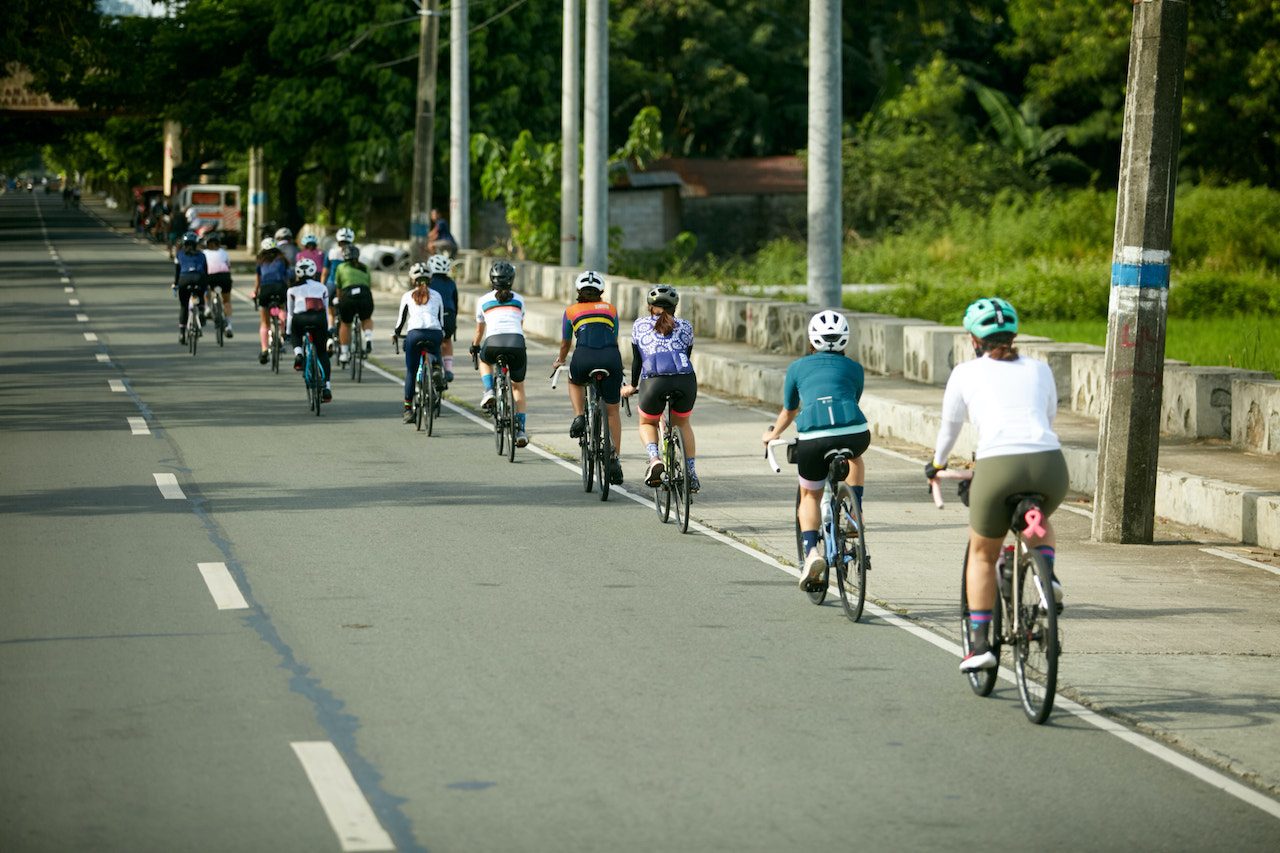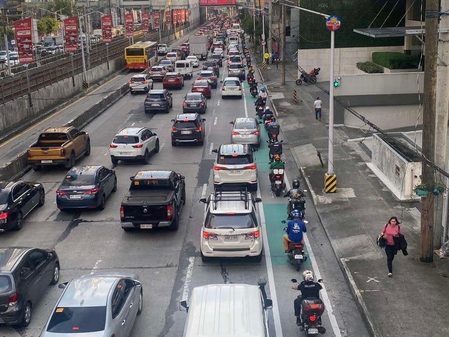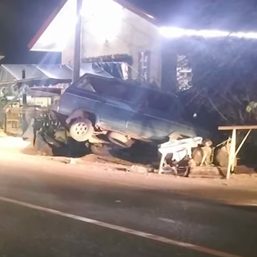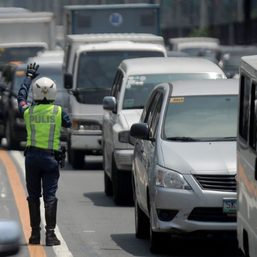SUMMARY
This is AI generated summarization, which may have errors. For context, always refer to the full article.

MANILA, Philippines – Coming out of the pandemic, a recent bike count initiative found that there are fewer bike commuters on the road nationwide.
The initiative counted 147,800 cyclists on the road, a decline from last year’s record at 191,578. This despite the expansion of the count from 10 to 17 cities this year.
This is the second year that network Mobility Awards implemented their Bilang Siklista Bike Count project, a citizen-led initiative that counts bike commuters during peak hours in different cities.
There were considerable drops in the bike count in Marikina, Pasig, San Juan, Davao City, Iloilo, and Naga. Meanwhile, Quezon City and Mandaue recorded an increase in the number of cyclists.
Mobility Awards national coordinator Arielle Celine Tabinga attributed the decline to unsafe road conditions, the encroachment of motorists in designated bike lanes, adverse weather conditions on the days of the count, and the easing of COVID-19 restrictions on public transport.
However, Tabinga said that the expansion of the scope of the project and the increase in the number of volunteers show a growing recognition of cycling as a viable mode of transport.
“The increasing number of cities participating in the count showed that more cities are embracing the potential of cycling as a daily transport option, and are recognizing the importance of data on road users…to inform road improvement projects such as bike lanes,” Tabinga said on Monday, October 9.
The bike count was conducted in 10 cities in Metro Manila and in seven provincial cities on seven different dates in June and July. 817 individuals volunteered for the project.
The count also showed a gender disparity of cyclists on the road. Almost all of the cyclists counted were male. Only 4% of the cyclists were female. More than half of the cyclists do not wear a helmet.
Mobility Awards is organized by groups Institute for Climate and Sustainable Cities, MNL Moves, Climate Reality Project-Philippines, 350 Pilipinas, and Pinay Bike Commuter.
Why count cyclists on the road?
Despite the decrease from last year’s count, the project’s findings reveal that around a hundred thousand people choose active transport and are in need of better infrastructure.
This number, the group hoped, would support the call for improved bicycle and pedestrian infrastructure in cities.
The group acknowledged the limitations of their initiative. In the press conference on Monday where they released the results, they called on local governments to integrate bike counts to standard traffic volume counts.
“We want to normalize biking as a transport choice, an everyday option for you to move around,” said Aldrin Pelicano, founder of MNL Moves.
According to Pelicano, bike commuting is an accessible choice for many while the public waits for improvements on public transport.
“We have big ticket projects being done right now. We still have to wait for years,” Pelicano said. “But right now people need to travel. They need to go to work, to the supermarket, take care of their loved ones.”
Bikes in general are the more affordable than cars.
According to a recent Social Weather Stations (SWS) survey, one in every three households in the country has at least one member who cycles. Another SWS survey released last year found that there are four bike owners to every car owner.
Pelicano said count initiatives like this could contribute to the development of transport and mobility infrastructure nationwide.
Beyond better infrastructure, policies and programs by the local governments must first make a bike commuter or an active transport user feel safe, transport planner Keisha Mayuga told Rappler. Mayuga is the founder of Life Cycles PH, a group that sought to provide bikes for front liners during the COVID-19 pandemic.
“Having local policies and programs such as open streets, implementing school streets, and having laws protecting cyclists help enable a cycling culture to grow,” said Mayuga.
Mayuga cited the case of Quezon City, the only city in Metro Manila to show an increase in cyclists in the bike count.
“Working with the community is also a key factor to encourage more people to bike,” Mayuga added. “This also must be why Quezon City has an increasing number of cyclists.”
Quezon City continues to expand its bike lanes. On the same day as the bike count findings were launched, the city together with the Department of Transportation held a groundbreaking ceremony for the expansion of bike lanes along the Elliptical Road and Commonwealth Avenue. This also included sidewalk improvement and construction of public utility vehicle stops in the same areas.
Why bike?
Mobility groups underscored the health benefits of cycling and its contribution to the reduction of greenhouse gas emissions. Bikes also take up lesser space on the road.
Using the US Environmental Protection Agency’s Greenhouse Gas Equivalences Calculator , the bike count project found that 147,800 cyclists on the road meant an estimated 36.74 metric tons of carbon dioxide emissions were reduced.
Aside from its environmental impact, cycling has proven to be more cost-effective.
According to the initiative, 147,800 people cycling instead of using motorcycles or cars save P208,223.80 for motorcycle fuel and P615,206.69 for car fuel.
When 147,800 people are on bikes, this creates relatively free-flowing traffic on typical two-lane urban roads. The same number of people on cars would create the usual stop-and-go traffic situation that many Filipino commuters are already familiar with. – Rappler.com
Add a comment
How does this make you feel?

![[OPINION] Steps the Philippines can immediately take to reduce road casualties](https://www.rappler.com/tachyon/2024/05/Steps-the-Philippines-can-immediately-take-to-reduce-road-casualties.jpg?resize=257%2C257&crop_strategy=attention)


There are no comments yet. Add your comment to start the conversation.